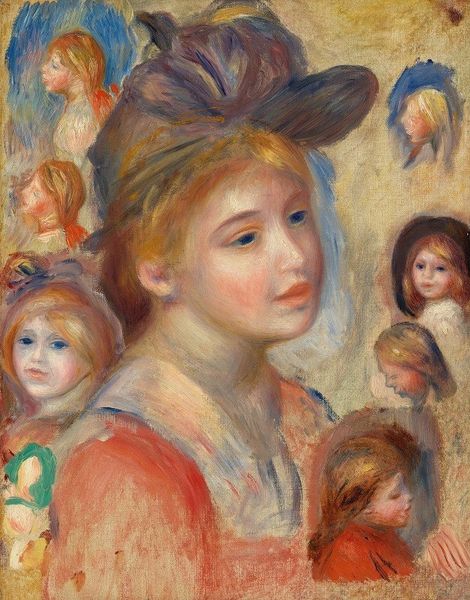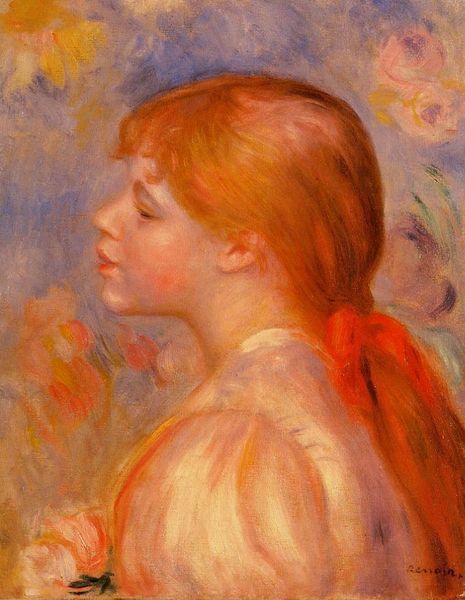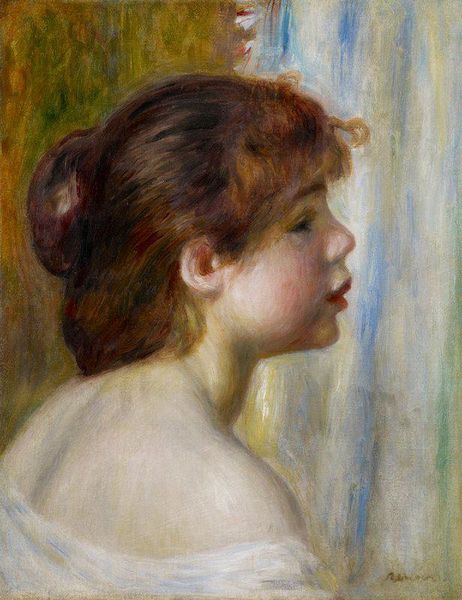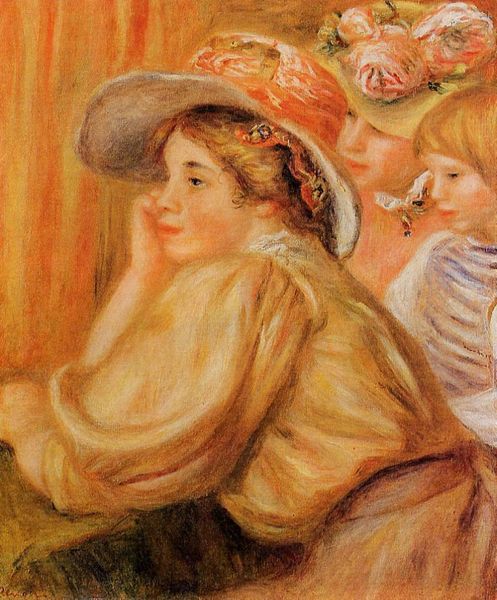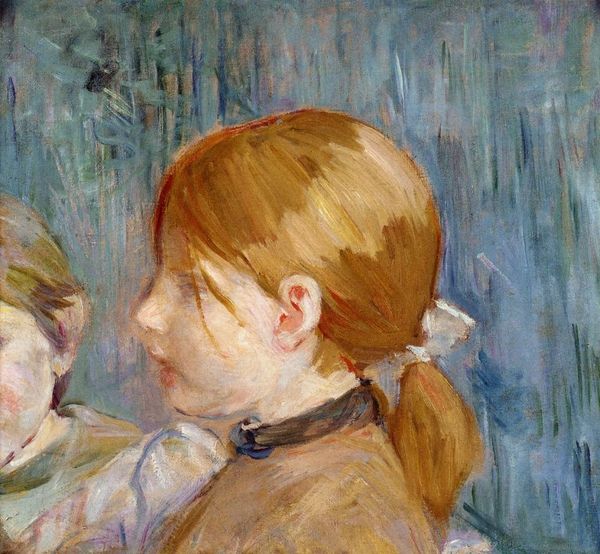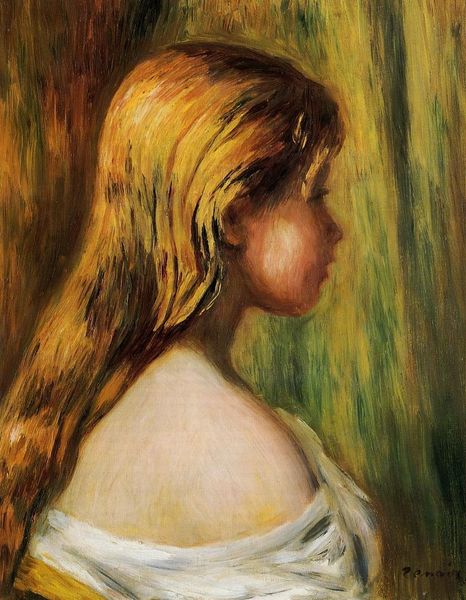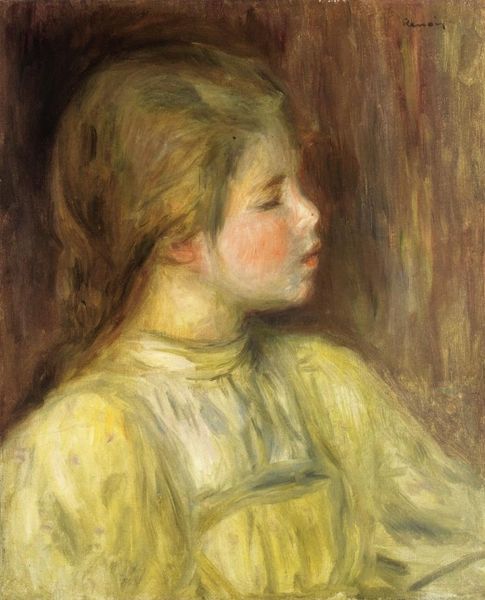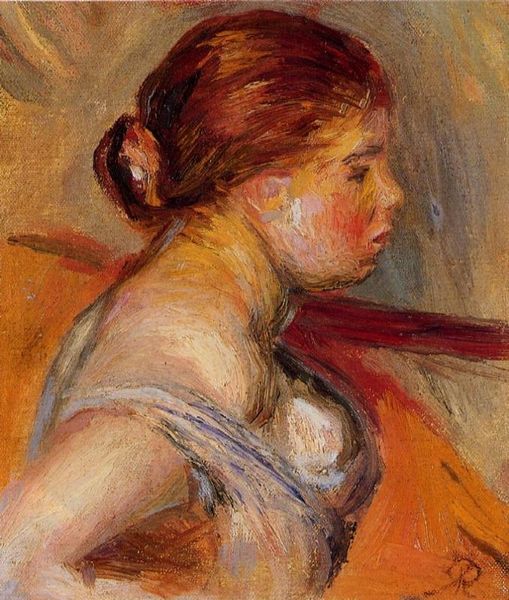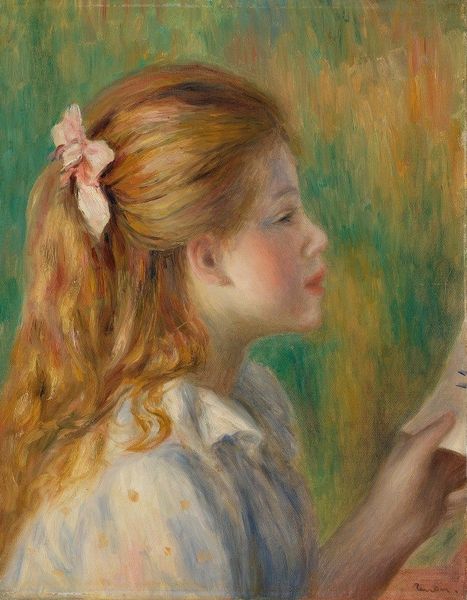
painting, oil-paint, impasto
#
portrait
#
painting
#
impressionism
#
impressionist painting style
#
oil-paint
#
figuration
#
oil painting
#
impasto
#
group-portraits
Copyright: Public domain
Curator: We're looking at a painting entitled "Children's Heads," attributed to Pierre-Auguste Renoir. It's currently held in a private collection, and executed in oil paint, using the impasto technique. Editor: What strikes me immediately is the sense of effervescence. There's a looseness, a sort of shimmering effect across the canvas. It's almost as if these aren’t portraits in the traditional sense, but fleeting glimpses of childhood. Curator: Precisely. Note how Renoir prioritizes light and color over precise representation. The composition is a study in layering and repetition, faces emerging from and receding into a background of similarly textured brushstrokes. Consider how he manipulates warm and cool tones to create depth, particularly in the hair. Editor: I see a recurrence of red ribbons and golden hair tones - and observe this artistic choice beyond mere aesthetics, as golden hair represents purity. What this symbol infers from its placement upon children’s heads bears weight here - almost as if Renoir captures something universally treasured, this fragile and transient beauty associated with innocence and youth. Curator: Interesting point! It brings to the fore a question about the individual versus the archetype. Are these portraits of specific children or, in fact, studies of idealized childhood, distilled into formal elements of color, line, and texture? The structural elements coalesce into this evocative, generalized image of youth. Editor: Perhaps it’s both. Renoir uses the portrait form— a carrier of identity— to suggest not individuality, but a shared experience or state of being. These figures symbolize universal, romantic notions tied to childhood. Their almost dream-like arrangement underscores childhood’s ethereal quality, our memory of it. Curator: And ultimately the technique enhances this impression. The lack of firm outlines, the blurring of edges, supports this reading. The brushwork serves a critical structural function; it articulates space, but softens the edges. Editor: It's less about objective depiction, and more a conjuring, through symbols and suggestion, of something deeply resonant about the past and the way we look at youth. Curator: Yes, a brilliant example of how formal structure and symbolic meaning come together in paint, texture and the recurring theme of warmth. Editor: I agree, I shall definitely revisit and bring along some new thoughts after further research of his artwork, but this was amazing indeed.
Comments
No comments
Be the first to comment and join the conversation on the ultimate creative platform.
